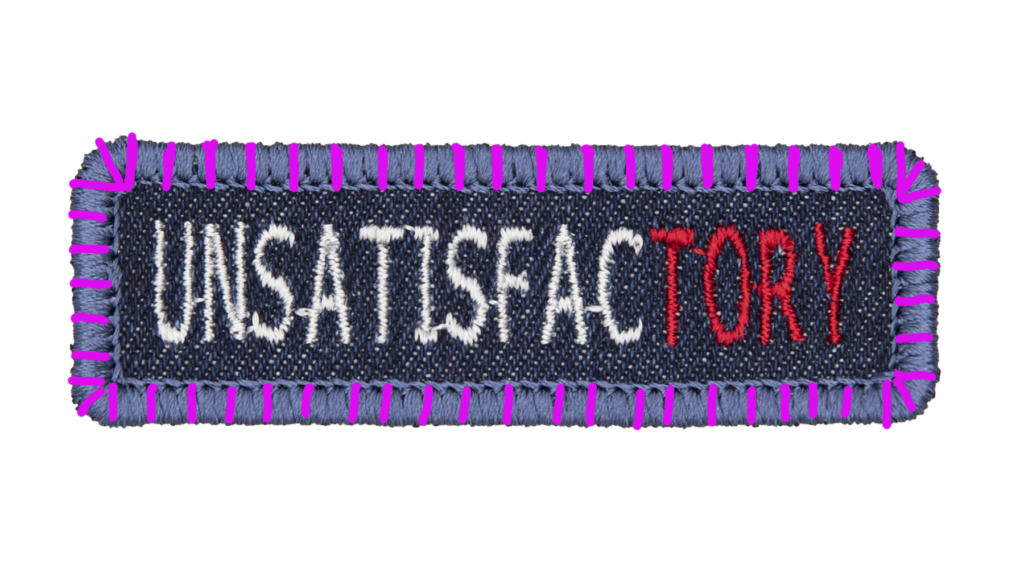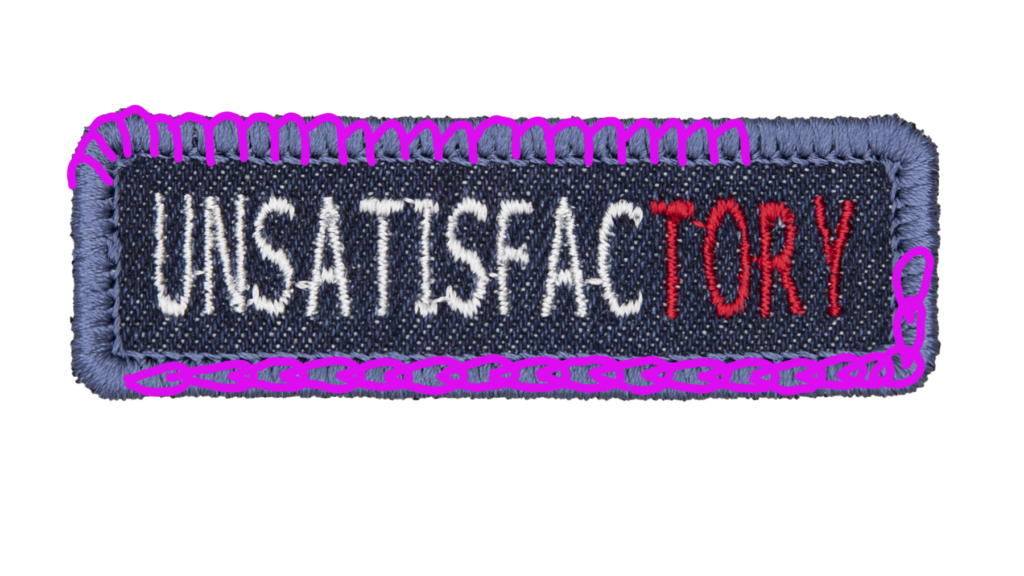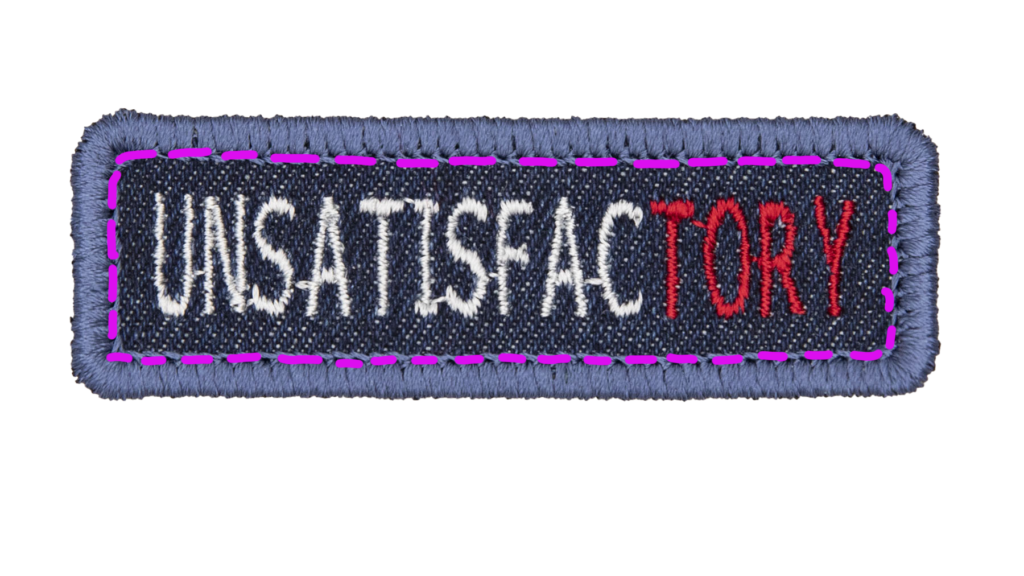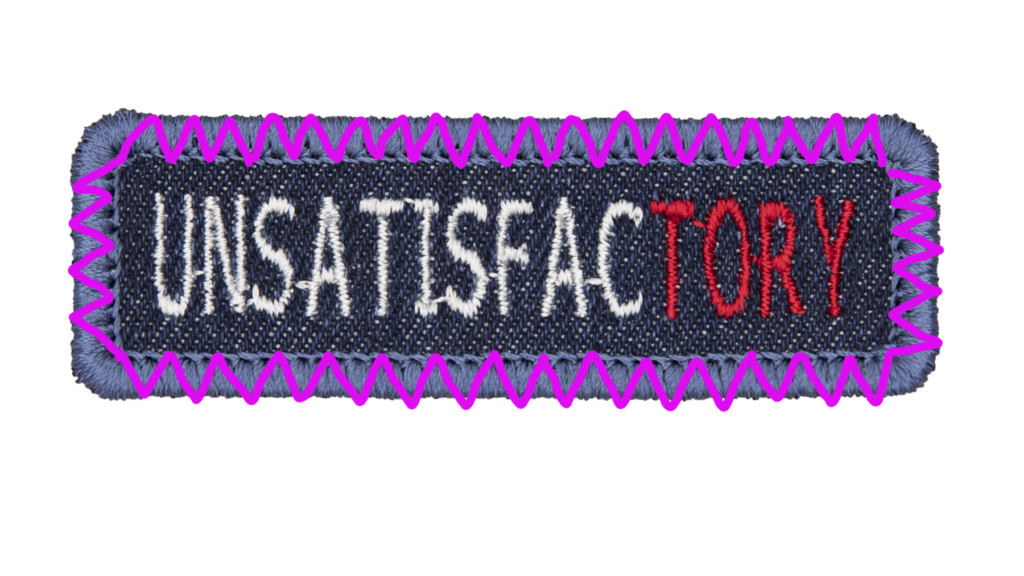Attaching a patch is easy. So have a look at what you’d like to attach your patch to as that will determine the best way to go about it.
Can I iron the patch in place?
If you want to attach your patch to something made from fabric (so a garment or cushion) start by looking at the care instructions. You’re looking for the symbol with an iron on it.

Ideally you want to be able to use a hot iron – that’s the symbol with the three dots. If you see the warm iron symbol ( two dots) that’s fine too. If you see the cool iron or do not iron symbol we recommend sewing your patch in place.
Before you get the iron out figure out where you want the patch to go. If that’s a flat area of fabric – ironing in place is perfect. If you want to put patches on something like a demin jacket which has lots of thick seams then you can iron the patch in position, but you’re going to want to add some stitches round the edge to hold it in place. The thickness in the seams makes it harder to get enough heat through to the backing so that it melts and sticks in place.
So if your item is happy with a hot or warm iron you can fix your patch very simply. Position your patch onto the garment. Cover with a clean cloth (something like a smooth teatowel) and iron on both sides at a high temperature for 15 – 20 seconds each side. The Heatseal backing takes 48 hours to fully set, and each time the patch is iron the Heatseal will restick. If you have access to a heat press use temperature setting of 160ºC – 200ºC for 15 – 20 seconds.
What If I Can’t Use A Hot Iron?
Some fabrics such as nylon and vinyl have a low melting point. Put a hot iron on these and you’ll end up with a melted mess stuck to your iron, or fabric which is permanently wrinkled up. Other fabrics such as leather and suede won’t melt but can scorch. Ideally in both of these cases you’d sew your patch in place.
Sewing Your Patch in Place
You can hand sew patches or fix them using a sewing machine.
Hand Sewing Patches in Place
Let’s start with hand sewing. Decide if you’d like to keep your sewing as invisible as possible or make it a feature. Invisible sewing needs matching thread. Use a thread meant for machine embroidery and a fine needle. Stitch over the border, keeping your stitches in line with those on the border. A stitch every 5mm or so will keep your path in place forever.

If you’d like to make a feature of your stitching you can choose embroidery threads in a contrasting colour. A stitch like a blanket stitch or chain stitch will hold the patch well.

Using a Sewing Machine to Attach Patches
How easy to is to machine your patch in place depends on how complex the shape is. Squares and rectangles are easy, circles are fairly easy and some of the other shapes are trickier. If you have a machine that only makes straight stitches you want to sew on the line where the inside of the embroidery border joins the patch. You’ll be sewing though several layers so use a stitch of at least 3mm and go slowly.

If your sewing machine lets you zig zag (mine doesn’t) you can set the zig zag width to slightly wider than the border on the patch. Line the patch up so that the stich goes from just outside the patch to just inside the embroidered border on the patch. More complicated shapes can be tricky for this, and if you’re not sure it’s worth cutting the shape of the patch out of a fabric remnant and having a trial run on spare fabric.

Gluing Your Patch in Place
If you hate sewing there’s fabric glue. The Heatseal backing on our patches sticks well with fabric glue. The glue we recommend is Aleene’s Flexible Stretch Fabric Glue. It’s designed for t-shirts and dancewear so it doesn’t set into a hard area that is uncomfortable against your skin.
Please get in touch if you need more help with how to attach a patch – just use the contact us form.


Recent Comments